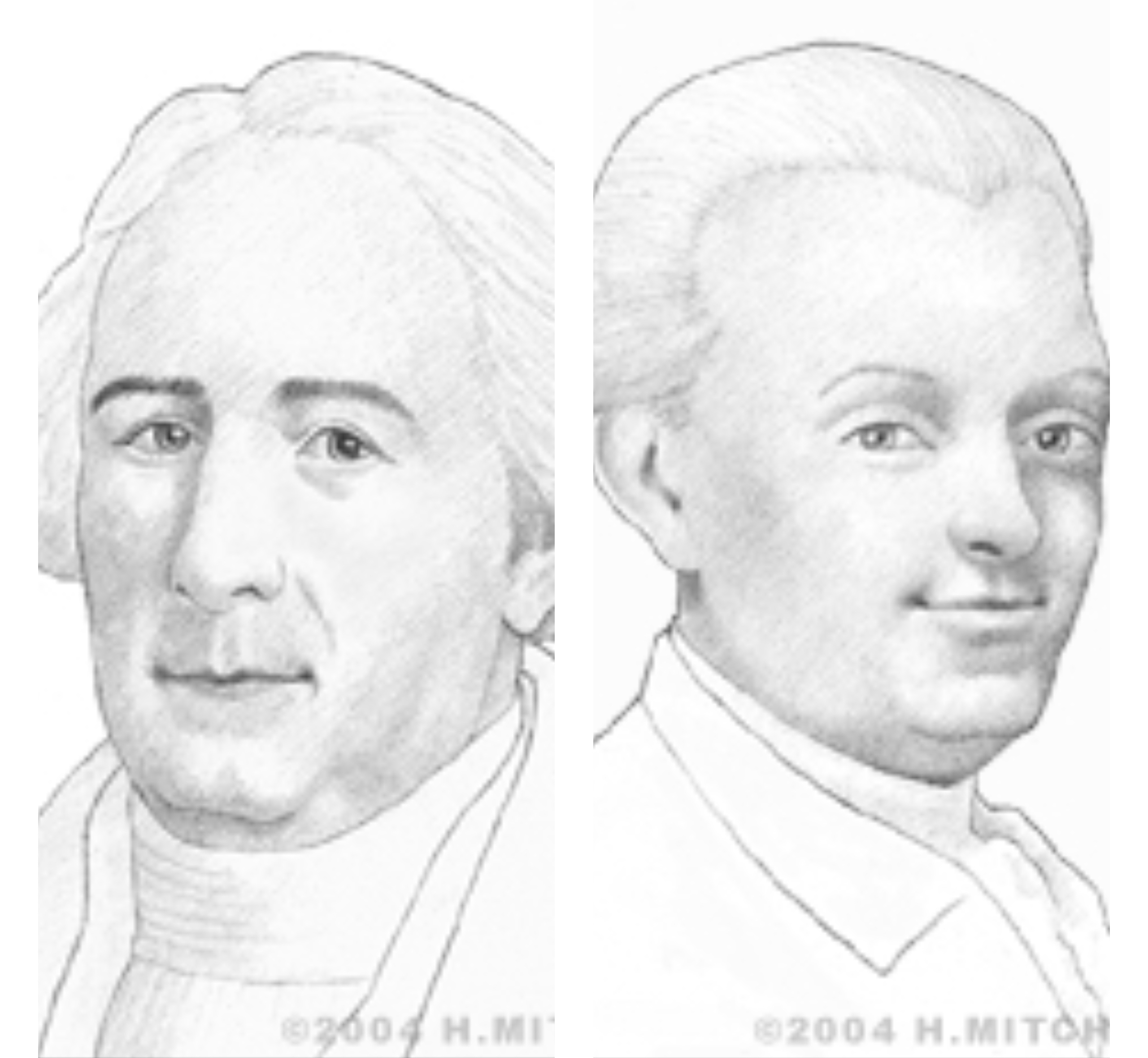Joseph-Michel and Jacques-Étienne Montgolfier
Before there were airplanes, man was able to experience the wonder of floating high above the earth with a somewhat simpler invention: the hot air balloon. The device, invented by French brothers Joseph-Michael and Jacques-Etienne Montgolfier, allowed humans for the first time to view the world from a bird’s perspective and helped inspire subsequent interest in the developing field of aviation.
The brothers were born in Annonay, France: Joseph-Michael, on August 26, 1740; Jacques-Ètienne on January 6, 1745. They were two of 16 children born to Pierre Montgolfier, a successful paper manufacturer with factories in southern France. Joseph became intrigued with the idea of building a balloon in the 1770s and began experimenting with a bag he made out of paper from his father’s factory, filling it first with steam to see if it would stay aloft. It didn’t. His brother tried a similar approach but filled his bag with hydrogen gas. He wasn’t much more successful, but the brothers believed they were on to something
They worked together and discovered in 1782 that heated air from a fire could make a paper or fabric bag rise. They made one bag, or balloon, rise more than 3,000 feet and stay aloft ten minutes. In June of the following year they demonstrated a balloon to the public in their home town of Annonay, this time one made of silk lined with paper, which trapped the air directed into the balloon from a fire. This version, coated with fireproof alum and held together with buttons, rose to 6,000 feet and traveled more than a mile. It stayed aloft for ten minutes.
A few months later, on September 19, the Montgolfiers flew another balloon in Versailles before a public audience that included King Louis XVI and Marie Antoinette. This time the balloon carried a sheep, duck and rooster aboard to see what effect altitude had on living creatures. The balloon floated nearly two miles in about eight minutes. At the time the brothers had believed the smoke from an onboard fire was the key to keeping the balloon aloft. Later they realized it was the hot air that was important.
The French government was by now supporting the brothers’ experiments with their montgolfiers, as they called the balloons. In November 1783, one of the balloons was launched with two pilots, Jean-François Pilâtre de Rozier and François Laurent, Marquis d'Arlandes, marking the first manned hot-air balloon flight. They kept the balloon aloft for 25 minutes, and traveled more than five miles. Further flights followed, including a crossing of the English Channel on January 1, 1885.
The Montgolfier brothers were honored by the French Académie des Sciences for their work on balloons as well as a number of other accomplishments in a variety of fields. Among Jacques-Étienne’s achievements was the development of a process for manufacturing vellum. He died on August 2, 1799
Joseph-Michael was noted for improving paper manufacturing processes, work in hydraulics and aeronautics, inventing a calorimeter, and, with his brother, creating the hydraulic ram. He was also made a Knight of the Legion of Honour. He died on June 26, 1810.
Hot air balloons are still popular today with many hot air balloon fesitvals and events that take place all over the world.


